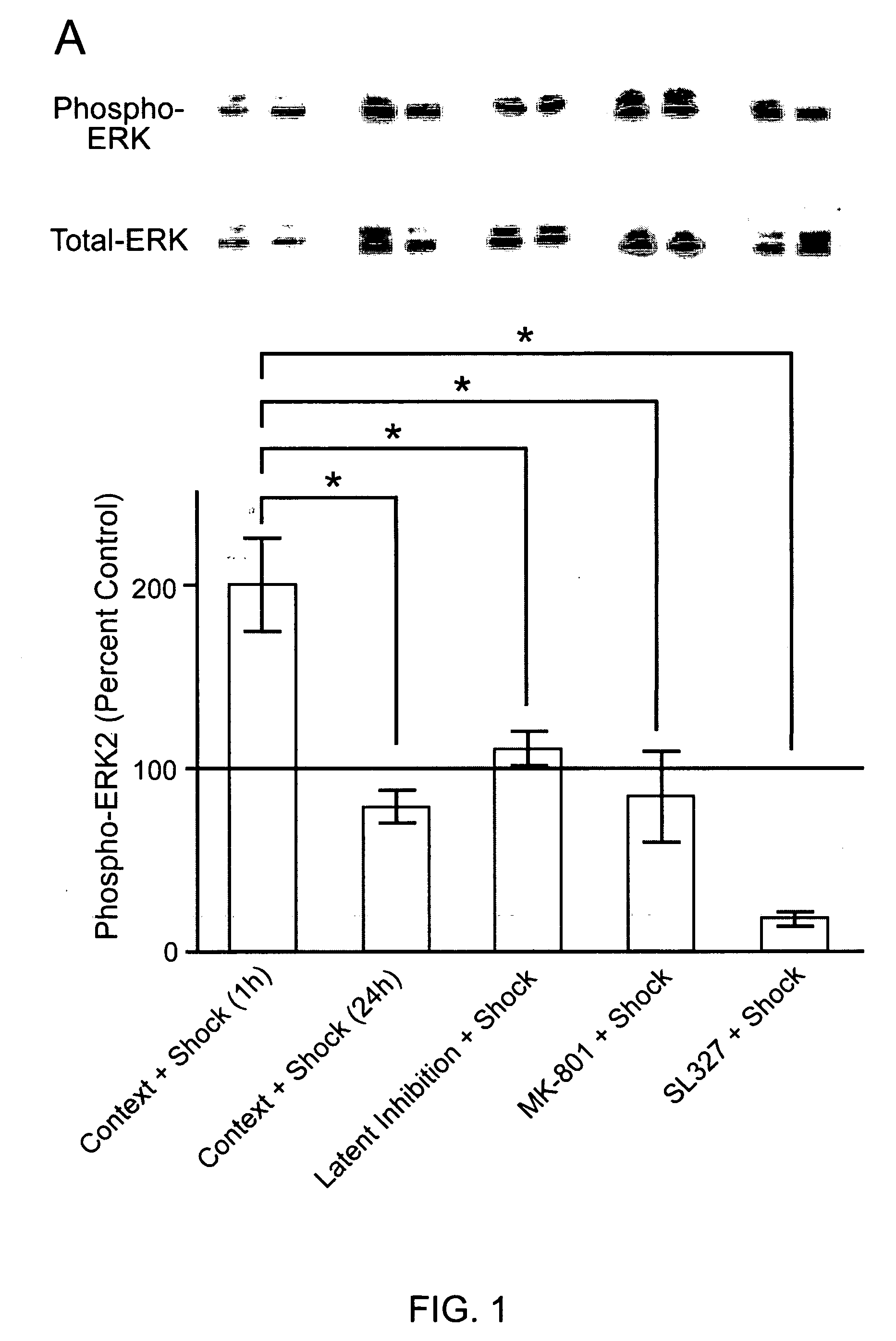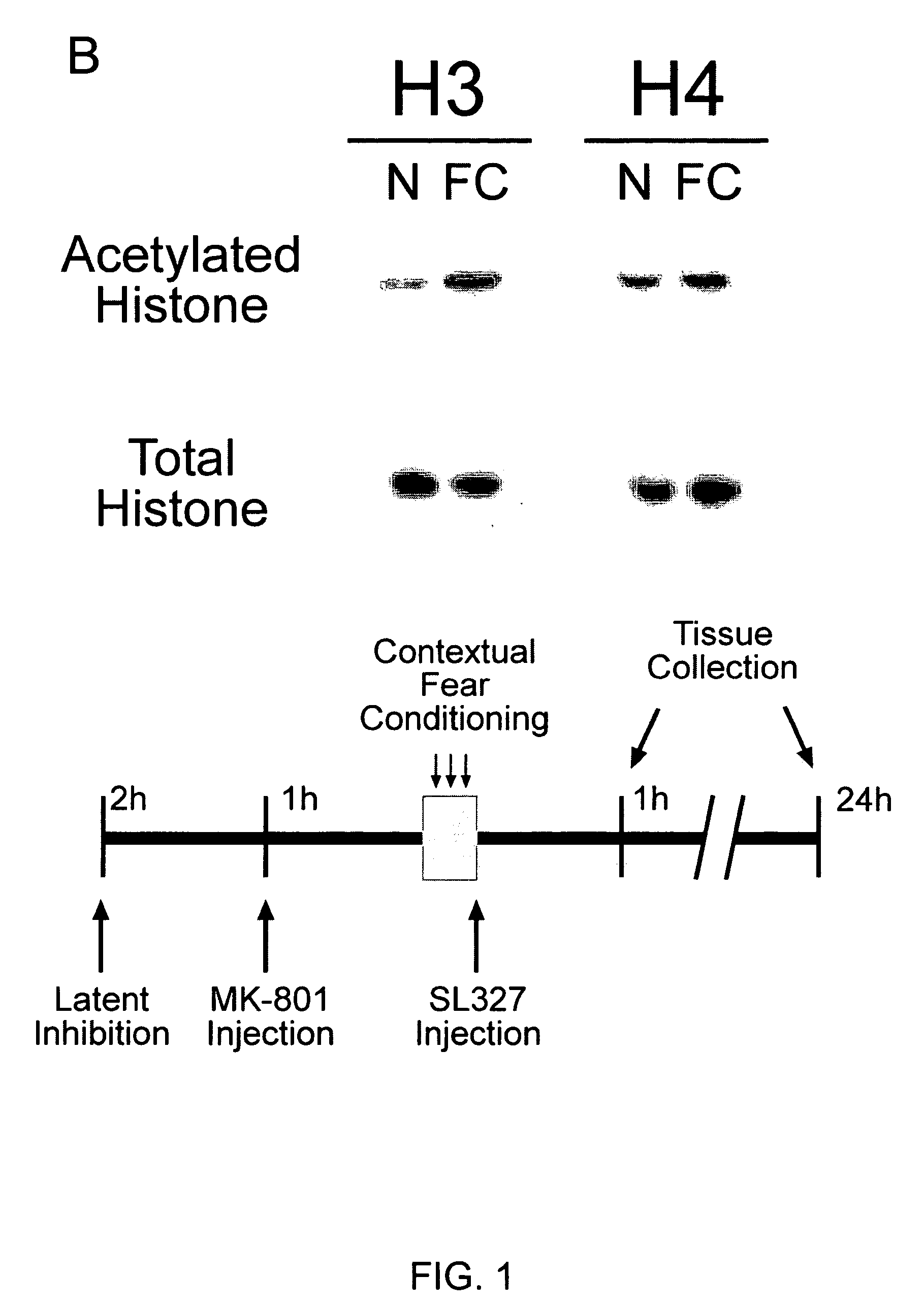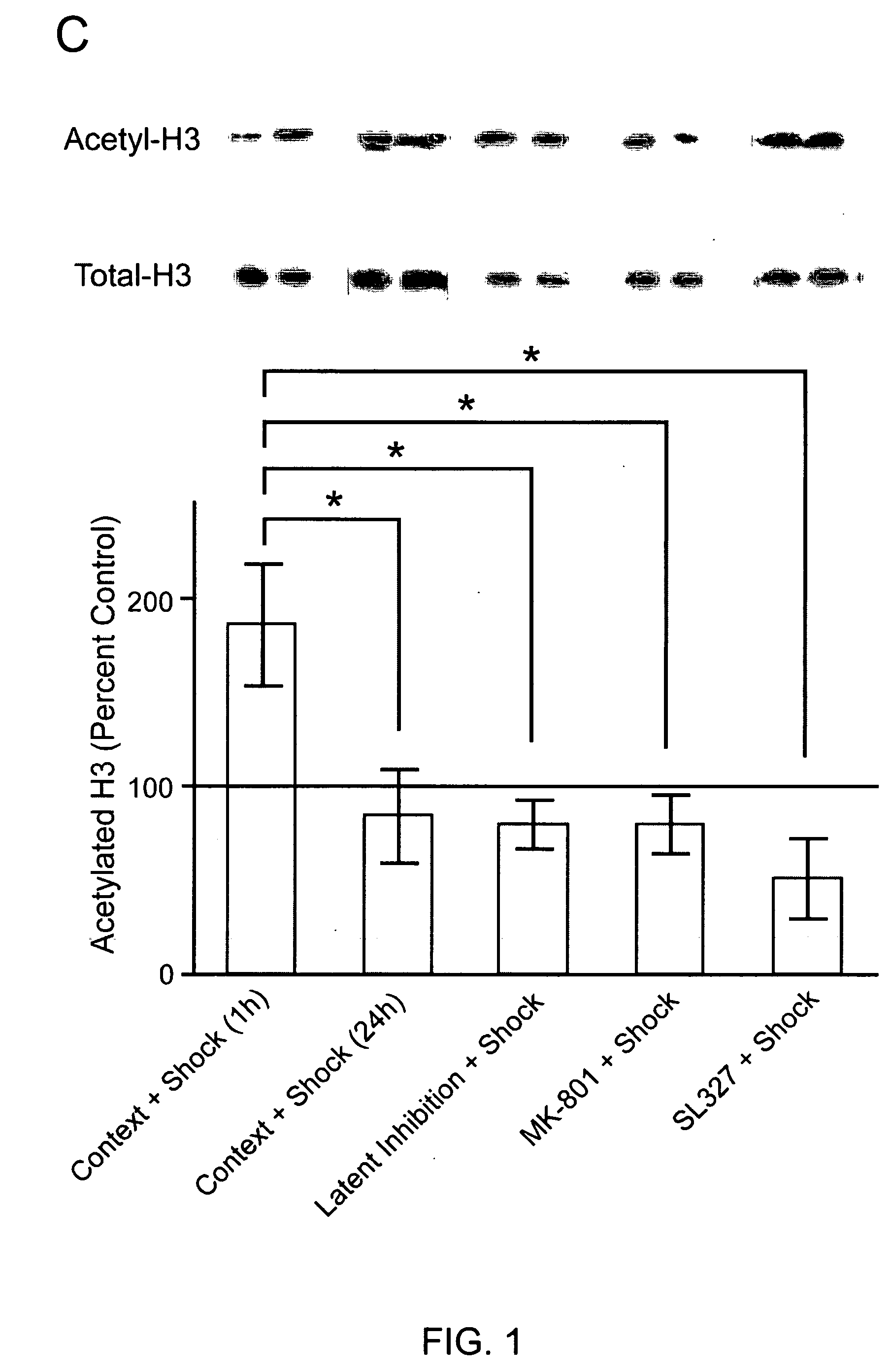Histone deacetylase inhibitors and cognitive applications
a technology of histone deacetylase and inhibitors, applied in the field of cellular biology, molecular biology, medicine, can solve the problems that the authors did not assess the effects of hdac inhibitors on normal or aging-related memory and cognition, and achieve the effect of enhancing long-term novel object recognition memory and long-term passive avoidance memory
- Summary
- Abstract
- Description
- Claims
- Application Information
AI Technical Summary
Benefits of technology
Problems solved by technology
Method used
Image
Examples
example 1
Exemplary Methods and Reagents
[0123] Animals. Young adult, male Sprague-Dawley rats (150-200 g) were used for all experiments. Animals were housed under LD 12:12 and allowed access to rodent chow and water ad libitum. Animals were allowed to acclimate to laboratory conditions at least 3 days prior to use in experiments. All procedures were performed with the approval of the Baylor College of Medicine Institutional Animal Care and Use Committee, and according to national guidelines and policies.
[0124] Fear Conditioning. Animals were transported to the laboratory at least 30 min prior to fear conditioning. Animals were placed into the training chamber and allowed to explore for 2 min, after which they received an electric shock (1 sec, 0.5 mA). The 2 min-1 sec shock paradigm was repeated for a total of 3 shocks. After the last shock, animals were allowed to explore the context for an additional 1 min prior to removal from the training chamber. For experiments investigating the effec...
example 2
Regulation of Histone Acetylation In Vivo by Contextual Fear Conditioning
[0132] Contextual fear conditioning requires ERK activity and leads to an increase in the activity of ERK2 in area CA1 of the hippocampus of rats 1 h after training (Atkins et al., 1998). The present inventors confirmed that the behavioral methods employed in the current studies also led to increases in ERK2 activity in area CA1 of the hippocampus. Contextual fear conditioning increased levels of phospho-ERK2 (P-ERK2; FIG. 1A) without affecting levels of P-ERK1 (data not shown) when measured 1 h after fear conditioning. The increase in P-ERK2 was not apparent 24 h after training (FIG. 1A), indicating that the regulation of ERK2 was transient. Injection of animals with the NMDA-receptor (NMDA-R) antagonist MK-801 1 h prior to fear conditioning blocked the increase in P-ERK2 normally seen 1 h after fear conditioning (FIG. 1A) and the formation of contextual fear memory (FIG. 2C-D). Moreover, injection of animals...
example 3
Regulation of Histone Acetylation In Vitro by NMDA-RS
[0138] ERK is known to be involved in hippocampus-dependent memory formation, including contextual fear conditioning (Atkins et al., 1998; Selcher et al., 1999). Moreover, the results indicate that the ERK signaling cascade may be important in the regulation of chromatin structure. Therefore, the present inventors tested whether activation of ERK, like behavioral conditioning itself, might trigger regulation of histone acetylation in area CA1. To ensure that the slice cultures were closely modeling the biochemical changes that occur in vivo, the present inventors first investigated whether ERK and / or histone acetylation was regulated by activation of NMDA-Rs. Treatment of hippocampal slices with NMDA for 10 min induced significant increases in P-ERK2 (FIG. 3A). The increases in P-ERK2 were blocked when slices were pretreated with either U0126 or PD98059 (FIG. 3A), which are inhibitors of MEK. Moreover, treatment of slices with NM...
PUM
| Property | Measurement | Unit |
|---|---|---|
| Plasticity | aaaaa | aaaaa |
Abstract
Description
Claims
Application Information
 Login to View More
Login to View More - R&D
- Intellectual Property
- Life Sciences
- Materials
- Tech Scout
- Unparalleled Data Quality
- Higher Quality Content
- 60% Fewer Hallucinations
Browse by: Latest US Patents, China's latest patents, Technical Efficacy Thesaurus, Application Domain, Technology Topic, Popular Technical Reports.
© 2025 PatSnap. All rights reserved.Legal|Privacy policy|Modern Slavery Act Transparency Statement|Sitemap|About US| Contact US: help@patsnap.com



